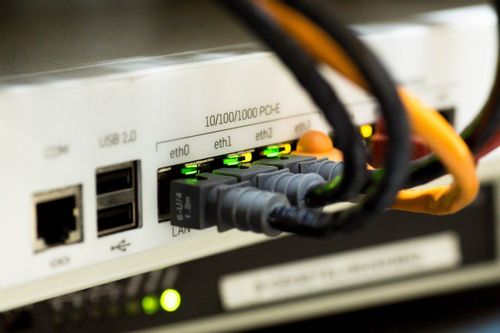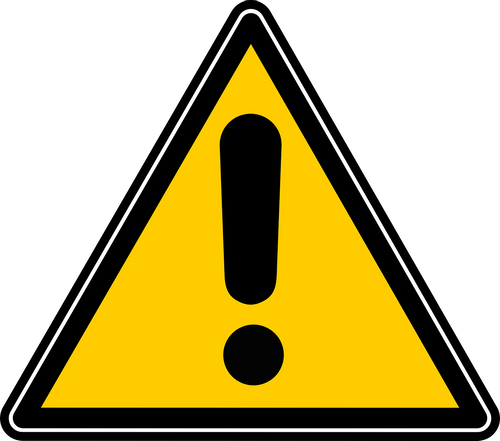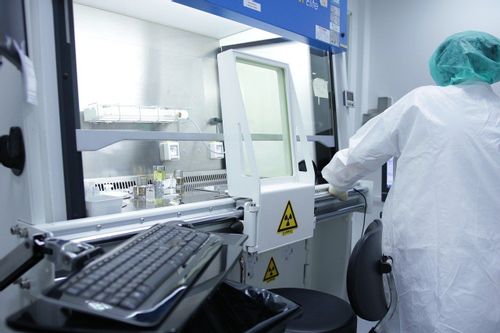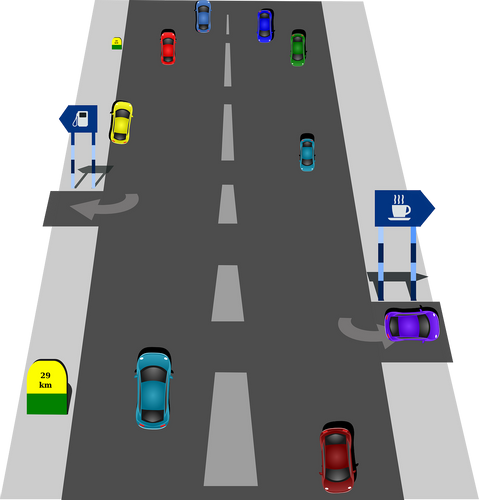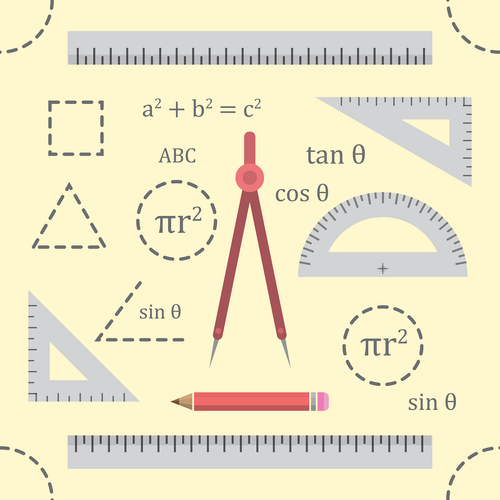Standards Packages
iTeh together with SIST has developed and compiled a comprehensive collection of standard packages to support your standard requirements. Our packages cover an array of content that includes quality management, risk management, road vehicles, machine safety, and much more. With over 200 packages to choose from, you are sure to find a collection to suit your standard needs.
Latest Standards
IEC 61000-4-2: 2025 relates to the immunity requirements and test methods for electrical and electronic equipment subjected to static electricity discharges from operators directly and from personnel to adjacent objects. It additionally specifies ranges of test levels which relate to different environmental, and installation conditions and establishes test procedures. The objective of this document is to establish a common and reproducible basis for evaluating the performance of electrical and electronic equipment when subjected to electrostatic discharges. In addition, it includes electrostatic discharges which can occur from personnel to objects near the equipment. This document specifies: - ideal waveform of the discharge current; - range of test levels; - test equipment; - test setup; - test procedure; - calibration procedure; - measurement uncertainty. This document gives specifications for tests performed in laboratories and guidance to post-installation tests. This document is not intended to specify the tests to be applied to particular apparatus or systems. The main aim is to give a general basic reference to all concerned product committees. The product committees remain responsible for the appropriate choice of the tests and the severity level to be applied to their equipment. This document excludes tests intended to evaluate the ESD sensitivity of devices during handling and packaging. It is not intended for use in characterizing the performance of ESD protection circuit IEC Guide 107. This document forms Part 4-2 of IEC 61000. It has the status of a basic EMC publication in accordance with IEC Guide 107. This third edition cancels and replaces the second edition published in 2008. This edition constitutes a technical revision. This edition includes the following significant technical changes with respect to the previous edition: a) added a calibration requirement for ESD generators with air discharge tip; b) added a normative annex for test setups for particular kind of equipment (see Annex I); c) added an informative annex for wearable devices (see Annex J); d) added an informative annex on how to select test points and give guidance on how to specify the number of pulses for direct contact discharges (see Annex E); e) moved Clause 9 into a new informative annex (see Annex K); f) improvement of the current calibration procedure; g) improvement of the measurement uncertainty considerations with examples of uncertainty budgets; h) because post-installation tests cannot be performed in a controlled environment, this test method has been moved into a new informative Annex G.
- Draft74 pagesEnglish languagesale 10% offe-Library read for1 day
IEC 60601-2-68:2025 applies to the BASIC SAFETY and ESSENTIAL PERFORMANCE of X-ray based IMAGE-GUIDED RADIOTHERAPY equipment for use with EXTERNAL BEAM EQUIPMENT (EBE). This document covers safety aspects of kilovoltage (kV) and megavoltage (MV) X-ray imaging devices integrated in a specified geometrical relationship with EBE for the purpose of IGRT. It covers aspects of communication and relationships between the EXTERNAL BEAM EQUIPMENT and X-ray imaging devices, attached or not directly attached to, but in the same RADIATION shielded area as, and dedicated for use only with, the EXTERNAL BEAM EQUIPMENT. This document deals with equipment for OFFLINE X-IGRT, ONLINE X-IGRT and REAL-TIME X-IGRT. It covers procedures to reduce the risk of over-reliance on the X-IGRT EBE SYSTEM. For example, in the case of ONLINE X-IGRT, the MANUFACTURER will provide an interactive interface for user interaction with the correction suggested by the system. This document does not apply to CT SCANNERS, X-RAY EQUIPMENT for RADIOGRAPHY, and X-RAY EQUIPMENT for RADIOSCOPY, which are not intended for use for IGRT. Requirements that are being tested according to another standard can be identified by the manufacturer and if equivalent do not require retesting, instead evidence can refer to the CT SCANNER, X-RAY EQUIPMENT for RADIOGRAPHY, or X-RAY EQUIPMENT for RADIOSCOPY EQUIPMENT manufacturer's providing compliance statements or test reports. If the X-IGRT EQUIPMENT is combined with an MEE, any requirement that is the same for the X-IGRT EQUIPMENT and the MEE, such as a PATIENT POSITIONER, is not required to be tested twice, but can be accepted as tested by the MEE. This document applies for X-ray equipment for radiography, radioscopy, and COMPUTER tomography used for IGRT. If a clause or subclause is specifically intended to be applicable to X-IGRT EBE SYSTEMS, the content of that clause or subclause will say so. Where that is not the case, the clause or subclause applies only to X-IGRT EQUIPMENT. This document, with the inclusion of TYPE TESTS and SITE TESTS, applies respectively to the MANUFACTURER and some installation aspects of X-IGRT EBE SYSTEMS intended to be: • for NORMAL USE, operated under the authority of the RESPONSIBLE ORGANIZATION by QUALIFIED PERSONS having the required skills for a particular medical application, for particular specified clinical purposes, e.g., STATIONARY RADIOTHERAPY or MOVING BEAM RADIOTHERAPY, • maintained in accordance with the recommendations given in the INSTRUCTIONS FOR USE, and • subject to regular quality assurance performance and calibration checks by a QUALIFIED PERSON. IEC 80601-2-68:2024 cancels and replaces the first edition published in 2014. This edition constitutes a technical revision. This edition includes the following significant technical changes with respect to the previous edition: a) alignment with the new editions of the relevant standards: – IEC 60601-2-1:2020; – IEC 60601-2-44:2009, IEC 60601-2-44:2009/AMD1:2012 and IEC 60601-2-44:2009/AMD2:2016; – IEC 60601-2-64:2014; b) clarification of the use of IEC 60601-2-68 for CT SCANNERS, X-RAY EQUIPMENT for RADIOGRAPHY and RADIOSCOPY used in the same room with an EXTERNAL BEAM EQUIPMENT (EBE); c) introduction of updated requirements related to MECHANICAL HAZARDS, RADIATION HAZARDS, PROGRAMMABLE ELECTRICAL MEDICAL SYSTEMS (PEMS), ACCOMPANYING DOCUMENTATION of an ME SYSTEM, and REMOTE OPERATION.
- Draft49 pagesEnglish languagesale 10% offe-Library read for1 day
IEC 61753-086-02:2025 contains the minimum initial performance, test and measurement requirements and severities which a fibre optic pigtailed 1 490/1 550 nm downstream and 1 310 nm upstream wide wavelength division multiplexing (WWDM) passive optical network (PON) device will satisfy in order to be categorized as meeting the requirements of category C (indoor controlled environment), as defined in IEC 61753-1:2018, Annex A. WWDM is defined in IEC 62074-1. Annex B gives general information for these PON WWDM devices. This first edition cancels and replaces the first edition of IEC 61753-086-2 published in 2009. This edition constitutes a technical revision. This edition includes the following significant technical changes with respect to the previous edition: a) Change of test conditions harmonizing with IEC 61753-1: 2018.
- Draft14 pagesEnglish languagesale 10% offe-Library read for1 day
IEC 62282-7-2:2025 applies to SOFC cell/stack assembly units, testing systems, instruments and measuring methods, and specifies test methods to test the performance of SOFC cells and stacks. This document is not applicable to small button cells that are designed for SOFC material testing and provide no practical means of fuel utilization measurement. This document is used based on the recommendation of the entity that provides the cell performance specification or for acquiring data on a cell or stack in order to estimate the performance of a system based on it. Users of this document can selectively execute test items suitable for their purposes from those described in this document.
- Draft47 pagesEnglish languagesale 10% offe-Library read for1 day
This document defines a data format to exchange data that is relevant for exchanging and using measurement equipment between calibration service providers, laboratories and requestors in vehicle safety testing. Additional content found on https://standards.iso.org/iso/ts/23520/ed-1/en defines standard exchange for equipment grouping and metadata definitions for test documentation. Related electronic documents are available for detailed reference based on examples. This document is applicable for all equipment manufacturers, calibration service providers, laboratories and their customers. This document excludes the exchange of test results or test documentation itself which is extensively defined in ISO/TS 13499.
- Technical specification7 pagesEnglish languagesale 15% off
This document specifies safety and quality requirements for detection and avoidance (DAA) systems used between uncrewed aircraft systems (UAS) and other objects including aircraft. This document includes the requirements for radars and optical sensors used for DAA and is derived to meet the requirements for UAS operations involving DAA set out in ISO 21384-3.
- Standard16 pagesEnglish languagesale 15% off
This document addresses the provision of tyre pressure monitoring (TPM) services. It specifies the form and content of the transmission data required to support TPM systems (TPMS) and the access methods for these data. This document provides specifications for common communications and data exchange aspects of the TPM application service that a jurisdiction regulator or operator can elect to require or support as an option, including: a) a high-level definition of the service that a service provider has to provide [the service definition describes common service elements (SEs), but does not specify the detail of how such an application service is instantiated, nor the acceptable value ranges of the data concepts defined]; b) the means to realize the service; c) application data naming, content and quality that an in-vehicle system (IVS) has to deliver, including a number of TPM profiles or data (noting that requirements and constraints of what can/cannot be transmitted over the air can vary between jurisdictions); d) support for a number of defined communication profiles to enable remote inspection. This document provides specifications for the following application profiles: — Application profile A1: the cyclical initiation of TPM message by on-board equipment (TPM-C). — Application profile A2: the exceptional initiation of TPM message by on-board equipment (TPM-E). — Application profile A3: the provision of TPM data as the result of an off-board request (TPM-R). — Application profile A4: The provision of TPM data as the result of an off-board reading of tyre pressures of vehicles which can potentially be unequipped (TPM-O).
- Standard74 pagesEnglish languagesale 15% off
IEC 60947-5-1:2024 applies to control circuit devices and switching elements intended for controlling, signalling, interlocking, etc., of switchgear and controlgear. It applies to control circuit devices having a rated voltage not exceeding 1 000 V AC (at a frequency not exceeding 1 000 Hz) or 600 V DC. This fifth edition cancels and replaces the fourth edition published in 2016. This edition constitutes a technical revision. This edition includes the following significant technical changes with respect to the previous edition: a) update of the scope structure and exclusions; b) requirements for control circuits; c) update of the normal service conditions (e.g. shock and vibration); d) update of information and marking requirements including environmental information requirements referencing IEC TS 63058:2021; e) update of the constructional requirements and the corresponding tests considering safety aspects (e.g. artificial optical radiation, security aspects, limited energy source, stored charge energy circuit); f) update of the EMC requirements according to the generic documents; g) new requirements for reed contact magnetic switches in Annex D; h) requirements for class II circuit devices achieved by double or reinforced insulation in Annex F; i) update of pull-out tests in Annex G; j) information requirements for audible signalling device in Annex J; k) insertion of new Annex O.
- Draft126 pagesEnglish languagesale 10% offe-Library read for1 day
This document a) addresses the support of safety extra low voltage (SELV) and limited power source (LPS) applications that provide remote power over: • 4-pair balanced cabling in accordance with the reference implementations of EN 50173 series using currents per conductor of up to 500 mA; • 1-pair balanced cabling using currents per conductor of up to 2 000 mA; and targets the support of applications that provide remote power over balanced cabling to terminal equipment, b) covers the transmission and electrical parameters needed to support remote power over balanced cabling, c) covers various installation scenarios and how these may impact the capability of balanced cabling to support remote powering, d) specifies design and configuration of cabling as specified in EN 50173-1. NOTE SELV requirements specify a maximum voltage of 60 V DC and LPS is understood in the applications referenced to be up to 100 W supplied within cabling. This document includes a mathematical model to predict the behaviour of different bundle sizes, various cabling constructions, and installation conditions for different current capacities.
- Draft48 pagesEnglish languagesale 10% offe-Library read for1 day
This document specifies the minimum design and performance requirements for clothing as part of personal protective equipment (PPE) to be used by firefighters, primarily but not solely to protect against exposure to flame and high thermal loads, and particulates (including other products of combustion). To assist with choice based on user risk assessment, a single level of heat and flame protection is included with a number of options that can provide additional protection. For more information on firefighter risk assessment consult ISO/TR 21808. The scope of this document does not include clothing for use in high-risk fire exposures where for example, reflective protective clothing according to ISO 15538 could be more appropriate, or for use in long-term firefighting operations in high ambient temperature, for example bush, wildland, or forest firefighting where clothing according to ISO 15384 (ISO 16073-3) could be more appropriate. Similarly, this document does not include clothing to protect against chemical and biological hazards, other than against short-term and accidental exposure while engaged in firefighting and associated activities when fighting fires occurring in structures. This document describes types, design, and performance of clothing, the specific requirements for clothing, marking, and manufacturer’s instructions.
- Standard23 pagesEnglish languagesale 15% off
This document specifies graphical symbols for diagrams related to industrial components, products and processing. This document constitutes a symbol library, from which users can use the symbols or created symbol examples for use in diagrams (see Tables 1 to 149). General rules and guidance for the preparation and presentation of graphical symbols are given in ISO 14617-1. Application rules for the symbols are shown in normative Annex A. This document does not apply to: — graphical symbols for fluid power objects, see ISO 1219-1 (the collective application standard of the ISO 14617 series); — symbols of measurement and control functions such as mathematical functions and process functions; — graphical symbols for electrotechnical objects, see the IEC 60617 database. Symbols deleted from the previous edition of the ISO 14617 series are summarized in informative Annex B as a reference. The alphabetic index of symbols defined in this document is shown in informative Annex C.
- Standard237 pagesEnglish languagesale 15% off
This document specifies the minimum design and performance requirements for a fire hood as part of personal protective equipment (PPE) to be used by firefighters, primarily but not solely to protect against exposure to flame, high thermal loads and particulate protection.
- Standard15 pagesEnglish languagesale 15% off
This document specifies requirements and test methods for electromagnetic emissions and for electromagnetic immunity of electrically powered wheelchairs and scooters, intended for indoor or outdoor use, or both, by people with disabilities. It is also applicable to manual wheelchairs with an add-on power kit. It is not applicable to vehicles designed to carry more than one person. This document also specifies requirements and test methods for the electromagnetic compatibility of battery chargers intended for use with electrically powered wheelchairs and scooters. A reference configuration is specified for adjustable wheelchairs and scooters in order to enable test results to be used for comparison of performance.
- Standard22 pagesEnglish languagesale 15% off
IEC 62276:2025 applies to the manufacture of synthetic quartz, lithium niobate (LN), lithium tantalate (LT), lithium tetraborate (LBO), and lanthanum gallium silicate (LGS) single crystal wafers intended for use as substrates in the manufacture of surface acoustic wave (SAW) filters and resonators. This edition includes the following significant technical changes with respect to the previous edition: a) The terms and definitions, the technical requirements, sampling frequency, test methods and measurement of transmittance, lightness, colour difference for LN and LT have been added in order to meet the needs of industry development; b) The term “inclusion” (mentioned in 4.13 and 6.10) and its definition have been added because there was no definition for it in Clause 3; c) The specification of LTV and PLTV, and the corresponding description of sampling frequency for LN and LT have been added, because they are the key performance parameters for the wafers; d) The tolerance of Curie temperature specification for LN and LT have been added in order to meet the development requirements of the industry; e) Measurement of thickness, TV5, TTV, LTV and PLTV have been completed, including measurement principle and method of thickness, TV5, TTV, LTV and PLTV.
- Draft35 pagesEnglish languagesale 10% offe-Library read for1 day
This document specifies certain characteristics of the essential oil of lavandin super [Lavandula x intermedia Emeric ex Loisel. ‘super’ (Ex Lavandula angustifolia Mill. x Lavandula latifolia Medik. ‘super’)], with a view to facilitating the assessment of its quality.
- Standard7 pagesEnglish languagesale 15% off
- Standard7 pagesFrench languagesale 15% off
This document specifies the general requirements and tests for decomposition blockers downstream of pressure regulators in acetylene manifold systems (see ISO 14114). Decomposition blockers can be used in the low-pressure section (downstream of acetylene manifold system outlet) up to 0,15 MPa (1,5 bar) e.g. in pipelines, outlet points or for the protection of low-pressure sections in big pipe systems. Decomposition blockers can only be used in sections with pure acetylene. The possible backflow of oxygen or air into the section where the decomposition blocker is installed needs to be prevented by a non-return valve downstream of the decomposition blocker.
- Standard6 pagesEnglish languagesale 15% off
This document defines methodologies to measure the energy consumption and productivity of coffee machines based on their characteristics. This document applies to professional and commercial coffee machines used, for example, in kitchens and food preparation areas in restaurants, canteens, hotels, coffee shops, breakfast rooms. This document does not apply to: - household appliances; - machines that use only coffee pods or coffee capsules; - machines powered by non-electrical energy (i.e. gas); - vending machines for hot beverages; - milk refrigerators integrated or not into traditional machines; - accessory equipment provided together with the machine (e.g. cup warmer, milk refrigerator) physically separated from the machine.
- Draft51 pagesEnglish languagesale 10% offe-Library read for1 day
This document specifies the framework, concepts, methodology for testing, and criteria to be achieved to claim conformance to multiple parts of the ISO/IEC 21122 series. It lists the conformance testing procedures.
- Standard24 pagesEnglish languagesale 15% off
This document specifies methods for the evaluation of some aspects of the behaviour of nonwoven fabrics in the presence of liquids. In particular:
— the liquid absorbency time;
— the liquid absorptive capacity;
— the liquid wicking rate (capillarity).
The different aspects of absorbency can relate to various end uses of the tested products.
The tests do not apply to any fabric containing super absorbent materials.
- Draft13 pagesEnglish languagesale 10% offe-Library read for1 day
This TS provides requirements and ISO/IEC 17065 interpretations for Conformity Assessment Bodies (CABs) assessing Cloud Services
This TS is intended to be used by the National Accreditation Bodies (NABs), as well as CABs.
- Draft45 pagesEnglish languagesale 10% offe-Library read for1 day
Benefits

Full Standards Solution
Our catalog includes not only latest standards but also full meta information about related standardization project lifecycle.

Cost Effective
Our PRICE MATCH GUARANTEE policy with multi-level volume discounts gives our clients the best option in the market. In addition, you can get access to the standards for 3, 10, or 30 days.

Stay Notified
Get alerted to the latest revisions and new standards in the Weekly Newsletter. Standards are constantly changing. Don’t miss a revision that can impact your business.
About Us
iTeh Inc is a software development and IT consulting team of professionals who provide consulting, development and implementation of solutions for all types of businesses.
In cooperation, with the Slovenian Institute of Standardization (SIST), we create a unique solution that covers all aspects of the lifecycle of Standardization organizations. iTeh Standards is a part of the solution that helps SIST to provide and sell their products to Customers.
iTeh Standards Store is an evolving project, our goal is to build long-term relationships with our customers. We believe in delivering quality services to solve our customers' challenges and define success by exceeding our customers' expectations. We are always ready to listen and our experience allows us to provide our customers with helpful effective suggestions. You can contact us by email.
We are committed to providing the best possible experience for our customers.
Compliance with international standards is increasingly becoming one of the key competitive advantages in the global market. Our company creates all conditions for the most comfortable implementation of new documents and norms in the processes carried out by your organization. Some of the key advantages of working with us are:
- Cost-effective - multi-level discounts and permanent updates of the functions give our clients the best option on the market.
- e-Library - access to standards for a period of time of your choice. It is a cost-effective solution for keeping updated with the newest standards.
- Company-wide documents - create a company account and connect all employees with access to purchased standards, e-Library documents, and packages.
- All in one spot - all purchased standards are kept in one place with controlled access by the account administrator.
- Client-centric - providing quality consulting is the prerogative and incentive to create new products that accompany your success and scale.
- 24 / 7 client support
We are dedicated to building mutually beneficial and long-term relationships with our clients. That is why our team focuses on creating services to help our customers develop and achieve new productive results.








